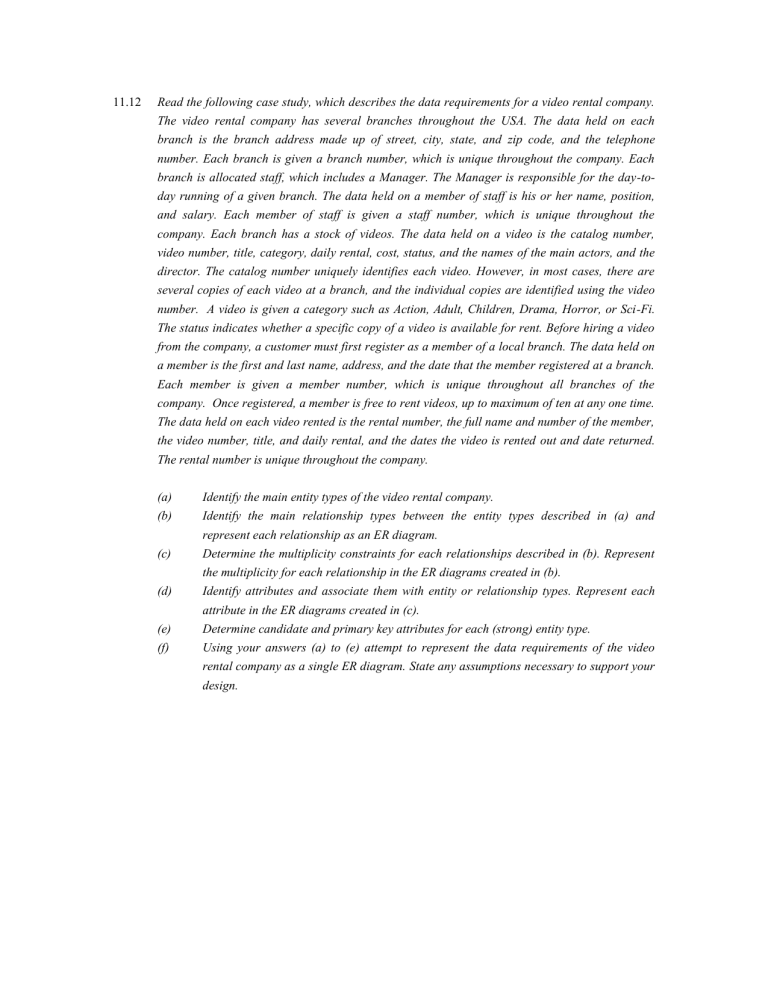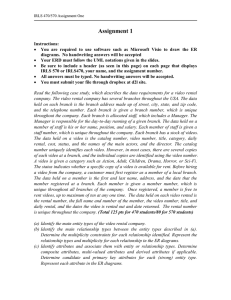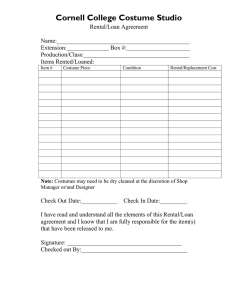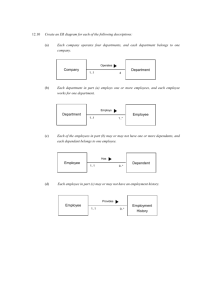
11.12 Read the following case study, which describes the data requirements for a video rental company. The video rental company has several branches throughout the USA. The data held on each branch is the branch address made up of street, city, state, and zip code, and the telephone number. Each branch is given a branch number, which is unique throughout the company. Each branch is allocated staff, which includes a Manager. The Manager is responsible for the day-today running of a given branch. The data held on a member of staff is his or her name, position, and salary. Each member of staff is given a staff number, which is unique throughout the company. Each branch has a stock of videos. The data held on a video is the catalog number, video number, title, category, daily rental, cost, status, and the names of the main actors, and the director. The catalog number uniquely identifies each video. However, in most cases, there are several copies of each video at a branch, and the individual copies are identified using the video number. A video is given a category such as Action, Adult, Children, Drama, Horror, or Sci-Fi. The status indicates whether a specific copy of a video is available for rent. Before hiring a video from the company, a customer must first register as a member of a local branch. The data held on a member is the first and last name, address, and the date that the member registered at a branch. Each member is given a member number, which is unique throughout all branches of the company. Once registered, a member is free to rent videos, up to maximum of ten at any one time. The data held on each video rented is the rental number, the full name and number of the member, the video number, title, and daily rental, and the dates the video is rented out and date returned. The rental number is unique throughout the company. (a) Identify the main entity types of the video rental company. (b) Identify the main relationship types between the entity types described in (a) and represent each relationship as an ER diagram. (c) Determine the multiplicity constraints for each relationships described in (b). Represent the multiplicity for each relationship in the ER diagrams created in (b). (d) Identify attributes and associate them with entity or relationship types. Represent each attribute in the ER diagrams created in (c). (e) Determine candidate and primary key attributes for each (strong) entity type. (f) Using your answers (a) to (e) attempt to represent the data requirements of the video rental company as a single ER diagram. State any assumptions necessary to support your design. Video catalogNo 1..1 Is 1..* VideoForRent videoNo Branch IsAllocated 1..* 1..1 Has 1..1 1..* Manages branchNo 0..1 Staff staffNo 1..1 1..1 1..1 Registers IsPartOf 1..* Registration 1..* 1..* Agrees 1..1 0..* RentalAgreement rentalNo Member Requests 0..* 1..1 memberNo



